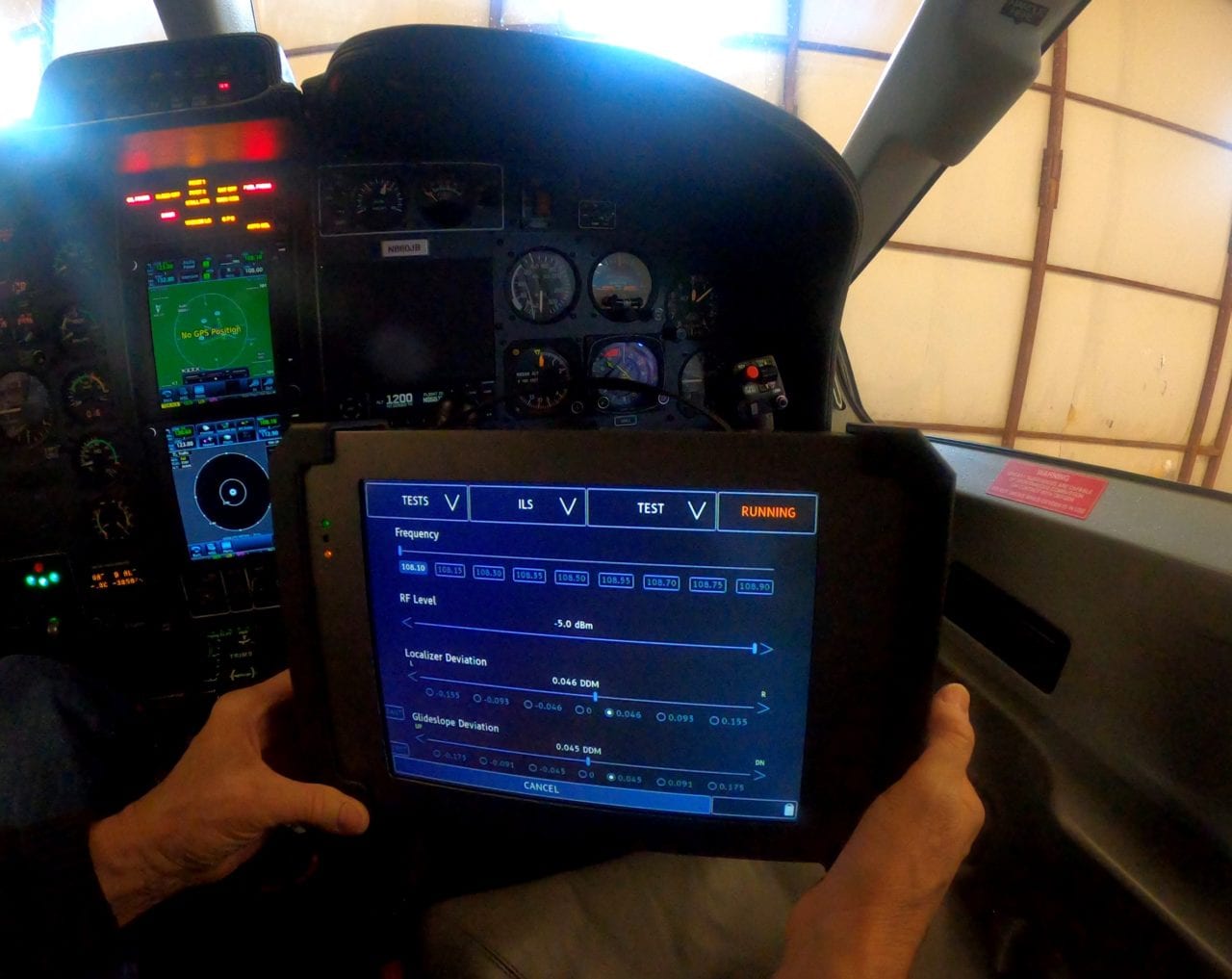
A T-RX system performing an Instrument Landing System test in the cockpit. Photo: CCX
Ottawa-based test equipment supplier CCX Technologies said on March 24 that it is adding GPS signal generator and VHF Digital Link (VDL) Mode 2 capabilities for its T-RX avionics radio and pulse testers in response to user requests.
The new features will satisfy upcoming airspace mandates and ease the workload on aircraft maintainers, according to CCX.
Controller-Pilot Data Link Communications (CPDLC) using VDL Mode 2 or Future Air Navigation System 1/A (FANS-1/A) “is mandated for all Eurocontrol flights above FL285 [28,500 feet] starting Feb 20, 2020,” CCX president Chris Bartlett wrote in a March 24 email to Avionics International. “While not yet a mandate, the FAA expects to have IFR [Instrument Flight Rules] Enroute CPDLC using VDL Mode 2 available domestically in 2020. New FAA mandates are always on the horizon, and we will be ready with tests to address those affecting avionics radios.”
Bartlett said that “a simple license key,” rather than new hardware, enables T-RX’s easy adoption of new capabilities required by new airspace mandates and that the T-RX products mean that users are able to do most of their avionics radio testing with one device to save time and reduce workload.
Bartlett wrote in the email to Avionics that the users thus far of T-RX are primarily in commercial and business aviation and that CCX “will have military users in the near future.”
The GPS signal generator is to permit avionics and maintenance personnel to generate GPS signals with a specified position and track, while the new VDL Mode 2 capability is to test transmit and receive functions for aircraft using the mode, which is the only one thus far that supports CPDLC in non-oceanic airspace, CCX said.
VDL Mode 2 is a set of air-ground protocols that increases the data rate of the air-ground link to 31,500 bits per second and allows operators to move from character-oriented protocols to bit-oriented Aeronautical Telecommunications Network (ATN) protocols using the same VHF ground and aircraft radios.
Released last year, the T-RX line, including the T-RX radio, T-RX Pulse, and T-RX RP + testers, are 10-inch touchscreen tablets and use proprietary applications to perform more than 100 different tests on “the majority of avionic radio systems,” CCX said – tests ranging from transponder frequency sensitivity to ARINC 429 label encoding and decoding among others. The small tablets “replace legacy testers with a single, compact unit,” the company said.
The testers “are built for the requirements of today’s modern maintenance shop, collecting data during testing and storing it on a secure server,” CCX said. “The data can be identified by aircraft tail number, work order, and technician, and retrieved as a PDF report for incorporation directly into customer work orders.”
The testers have an internal antenna and can wirelessly collect data and transfer it to a maintenance repair shop’s internally used servers and electronic work order systems. CCX said that it aimed to make the new testers easy to understand and replicable of Android and Apple smartphone and tablet graphical user interfaces.